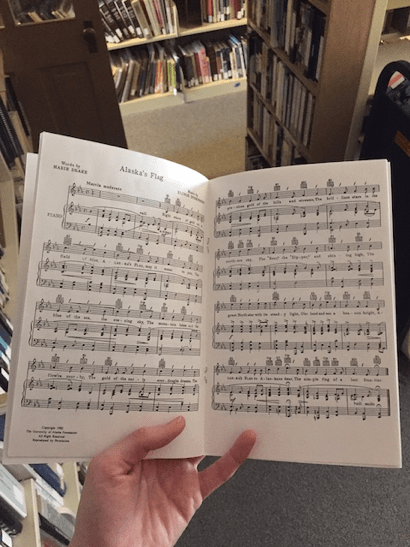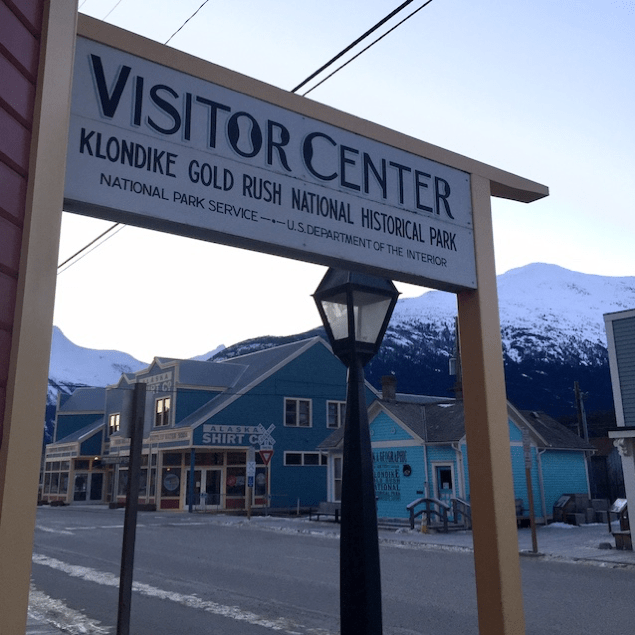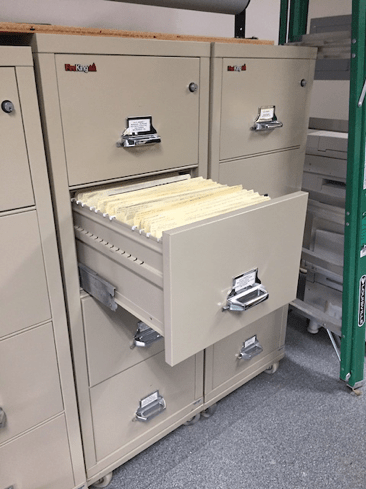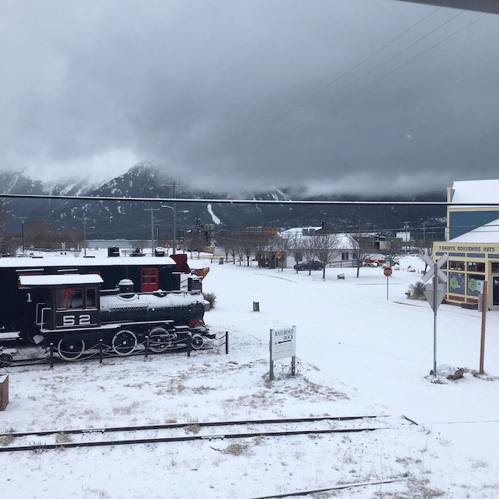Into the Inventory
Written by: Morgan W. Valenzuela
My name is Morgan Valenzuela and I am working as a Library Intern at the Klondike National Gold Rush National Historical Park. I didn’t always work in libraries; this is my first time. My professional experience has been based in museum work. From my work as an Undergraduate Research Assistant at the University of Illinois at Chicago, aiding in the development of the Out in Chicago exhibit at the Chicago History Museum, to my time as a Museum Assistant in a small, county institution in the Chicagoland suburbs, the collections I’ve worked with have been related to, but not directly involving, library work.
 An item in KLGO’s library, which I paged through during my inventory
An item in KLGO’s library, which I paged through during my inventory
So how did I end up at Klondike Gold Rush National Historical Park in small-town, Southeastern Alaska?
For a change of pace, as a personal challenge, and a way to explore less traditional methods of sharing history, I moved to Skagway, Alaska in the summer of 2018. I was hired as a seasonal tour guide at the Red Onion Saloon and Brothel Museum; I got to tell stories and answer questions about women’s experiences during the Gold Rush all day long. For me, all museum work has been, at its core, about sharing stories; library work facilitates the sharing of those stories. When this opportunity through ACE presented itself – to learn another method of preserving collections that share stories about the past – I couldn’t pass it up. Before I initially moved here, I was, I’ll confess, worried about what life would be like for some who’s ideal day off is a walk through natural beauty, a visit to a historic site, and a cup of coffee. I shouldn’t have been worried at all; Skagway and the surrounding area is a perfect place to visit if you enjoy the same things. Residents and visitors have NPS to thank for the bulk of these offerings (though, not the cup of coffee).

Taken as I stepped out into rapidly descending temperatures and the increasingly furious northern wind on February 8, 2021
Last Monday, I was reminded of just how varied those offerings are; with KLGO’s Curator and Museum Technician I was treated to a driving tour of the Park. The first six blocks of Skagway’s downtown are designated as a National Historic District, with 20 buildings kept and cared for by NPS. These buildings are largely house museums, interactive exhibits, and collections.
Beyond the boardwalk-lined streets and 9 miles down the road lies the Dyea Historic Townsite. The Chilkat Tlingit people used this area to maintain trading routes with Athabaskans in the interior; when people of European descent arrived, they were barred from using the route until the 1880s. It was also the Chilkat/Chilkoot Tlingit that settled the area first, followed by stampeders by 1897-1899. Once the White Pass & Yukon Route Railway was completed in 1900, is was far less convenient to reach the Yukon goldfields through Dyea and by 1902, Dyea had become a ghost town.
Today, there is a small neighborhood next to the townsite; the latter is a National Historic Landmark and visitors can stroll down what used to be the streets. Dyea also contains the trailhead for the Chilkoot Trail. While not suitable for an adventure on a day off, iced latte in hand, the 33 miles of the Chilkoot Trail winds its way through breathtaking landscapes and leads to Bennett, British Colombia.
Since I first arrived in Skagway as a summer seasonal, I’ve been lucky enough to visit all the NPS museums, explore the Dyea Historic Townsite, hike the Chilkoot Train, and return from Bennett to Skagway on a White Pass train. I never thought I would be lucky enough to work with the Park Service.
As a new member of the team at KLGO, I feel that I am walking a parallel path to the one I walked as a second-generation immigrant undergraduate student and as an emerging museum professional, a Latina working in a primarily white area. From my first foray into the field, I felt there was a great deal I didn’t know. Which would have been exciting, except that I didn’t know what questions to ask that might help me navigate first the academic world and then the professional realm. Now, with Bachelor of Arts in History and Gender and Women’s Studies, after many years in the field, I feel much better prepared to learn and grow from this opportunity.
This internship, of course, looks a little different than it might have if it had started this time last year. The experiences I share on this blog will be unavoidably shaped by the COVID-19 pandemic. For the second year in a row, Skagway will not receive any cruise ships; the bulk of our visitors arrive between April and September and are passengers on large commercial vessels. KLGO’s offices, museums, and trails have been and will continue to be quieter than usual. The town of Skagway is used to drastic ebbs and flows. For instance, we experience a drastic tidal range; at the peak of the month, the swing is up to 24 feet. Much like the tide, people flow in and out of this place; when gold was found in the Yukon, folks flooded in from all over the world, but by 1900, as all the gold fields were claimed the tide of stampeders began to recede. History is helpful in big moments like this one. History reminds us that this moment will also recede into the records.

On my second day, KLGO’s retiring Museum Technician taught me how the archives are organized – digitally and physically
The records, of course, are why I am here. In the space of these first two weeks I have begun the inventory of the Parks’ main library. This inventory will allow the Park to verify what items are in the collection and then standardize the cataloging method in accordance with the national NPS Library Program. When this is done, the books here at KLGO will more accessible to staff in Skagway and in parks across the country.
Another element of this project is learning to catalog. During my first full week of work at KLGO, the weather took a decidedly icy turn; the skies were blue, the wind came in strong from the north and brought a week with a wind chill as low as -30 in town. Add to the mix a small handful of new, but thankfully not community spread, COVID-19 cases, and it was an excellent time to work from home. Dressed in layers and situated at my kitchen counter, I was blessedly distracted from the relentless wind by Catalog 1, or CAT1, Training. This week, as I write, the weather has warmed enough to send a dusting of snow and blanket the town in clouds. I am back in the office, have resumed my inventory of the library, and am ready to begin cataloging.

The view from my office window at KLGO’s Visitor Center. The building was originally built for White Pass & Yukon Route’s train depot
